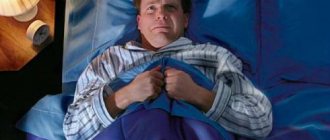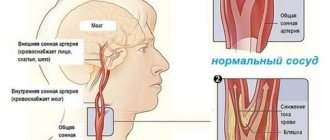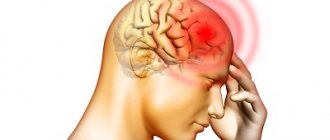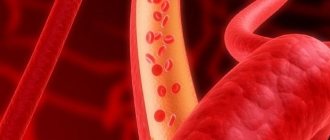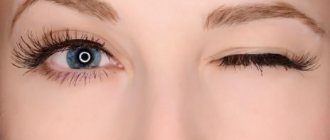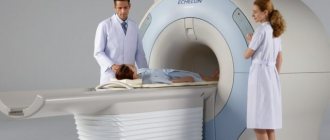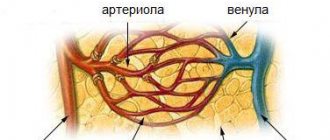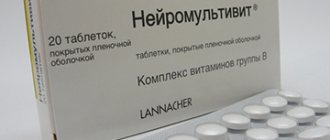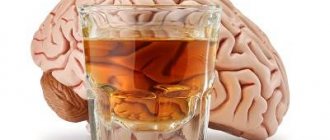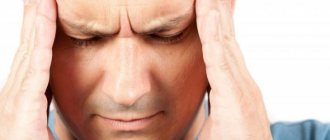An unreasonable attack of sudden fear is a panic attack. VSD and panic attacks always have a connection with each other. What is this - a disease or condition? Doctors don't have an answer to this question yet, but whatever it is, a person's life becomes unbearable.
VSD is a disorder of the autonomic system, which manifests itself in a violation of the tone of the parasympathetic and sympathetic systems. The trigger for development, as a rule, is a prolonged stressful state. But in some cases, vegetative-vascular dystonia has other causes, for example, the pathology develops against the background of osteochondrosis of the cervical spine.
Relationship between vegetative-vascular dystonia and SCH
Cervical osteochondrosis is degenerative-dystrophic changes in the cervical spine.
The most affected by it are the vertebral discs , which gradually lose their elasticity and lubrication, which leads to compression. The nerves and blood vessels that supply the brain are compressed, therefore, cerebral circulation is impaired. During ischemic processes in the brain, the production of hormones that are necessary for the normal functioning of the nervous system decreases, which provokes autonomic disorders.
Cervical osteochondrosis and VSD have a direct connection, but in some cases, nerves and vessels can be compressed in the chest area. Then the functioning of the internal organs is disrupted, and pain occurs in the spine, radiating to the heart. Such discomfort is often perceived by a person as heart pain - he begins to get very nervous (especially since heart medications do not have any effect), and all this ultimately leads to the development of panic attacks, neuroses and VSD.
Important! Sometimes cervical osteochondrosis and VSD develop as two separate pathologies and arise for different reasons.
Why does an attack of VSD occur?
Vegetative-vascular crisis occurs due to improper functioning of the autonomic nervous system. It is based on a critical situation to which the body reacts by releasing a high concentration of certain biologically active substances into the blood: amino acid derivatives, steroid, protein or peptide hormones. And the manifestations of the crisis depend on which substance will have an effect on the body.
There are many reasons that provoke an attack of VSD. This may be physical or emotional overload, intoxication, disruption of the usual rhythm of life, previous surgery, severe infectious diseases, exposure to medications, weather changes, alcohol intake, premenstrual syndrome, etc.
Causes and provoking factors
Osteochondrosis in the cervical region or in other parts of the spine can develop for the following reasons:
- prolonged forced stay in the same position, for example, when working at a computer;
- age-related changes in the structure of intervertebral discs;
- congenital disorders of blood vessels and the spinal column;
- back injuries.
Provoking factors may be:
- wrong lifestyle;
- lifting weights or playing strength sports.
Stress, endocrine pathologies, and disruption of metabolic processes can affect the occurrence of autonomic failures.
How to quickly relieve an attack of VSD at night?
At this moment it is important to try to calm down.
Drink tincture of valerian or motherwort.
Then think about something good.
You must understand that all these symptoms will definitely pass soon.
Panic attacks can affect a person’s health on both a psychological and physiological level.
To prevent this from happening, you should:
- train yourself to think only about good things before going to bed;
- don't worry about anything;
- imagine that all existing problems have already been solved.
Hello!
Source: psycholekar.ru
Symptoms
The clinical picture of VSD can be hidden or occur in the form of vegetative crises - attacks that provoke stressful situations, infections, mental or physical stress. Symptoms can manifest themselves in many systems and organs.
In most cases, the following symptoms are observed:
- Cardiovascular system – chest pain, disturbances in heart rhythm, surges in blood pressure.
- Respiratory organs – suffocation, shortness of breath, difficulty breathing.
- Digestive system – pain in the epigastric region, nausea, increased gas formation, constipation, diarrhea.
- Pelvic organs – frequent urination, pain or itching in the genital area,
- Vestibular system – dizziness and fainting.
In addition to all of the above, patients may complain of sweating, chills, heat waves, sleep disturbances, and tearfulness .
One of the common symptoms of cervical osteochondrosis is headaches, which become stronger when turning the head, and these pains cannot be relieved with painkillers. A characteristic symptom is also decreased hearing, “floaters” in front of gases, the appearance of dizziness with sudden movements, and numbness of the extremities .
When VSD and SCH occur simultaneously, a person’s condition deteriorates sharply, which is explained by a combination of physical pain and emotional distress.
Attack of VSD: what to do with spasms? An attack of vegetative-vascular dystonia - what to do?
Manifestations of vegetative-vascular dystonia are similar to symptoms of more serious diseases of the cardiovascular, nervous, digestive and respiratory systems of the body. It is no coincidence that the diagnosis of VSD is usually made by exclusion. Initially, the absence of cardiac ischemia, hypertension and other diseases is established.
There is a list of signs indicating the onset of a vegetative-vascular crisis:
- Increased sweating, including without physical activity;
- sudden headache;
- numbness of the arms and (or) legs;
- frequent, sometimes uneven heartbeat;
- lack of air when inhaling, increased breathing; attacks of suffocation are possible - not as severe as with bronchial asthma, but also unpleasant;
- feeling of anxiety, possibly the occurrence of causeless panic;
- apathy to what is happening, a feeling of powerlessness to act;
- drowsiness or, conversely, overexcitation when going to bed.
These symptoms may be accompanied by pain in the heart, in the abdomen, impaired intestinal motility, and frequent urge to urinate.
Most often, vascular crises occur during the day, evening or night. However, there are cases when, after suffering from an illness, a person felt ill after waking up in the morning and getting out of bed.
Danger of crises
VSD is not a fatal pathology, but often leads to irreversible pathologies. It is quite difficult to give a specific answer as to why VSD is dangerous, for example, panic attacks can lead to :
- attacks of suffocation;
- increased heart rate;
- loss of consciousness.
Such phenomena are very difficult for a person to bear and significantly worsen the quality of his life.
The main risks of VSD:
- disruptions in the functioning of the endocrine system;
- stomach ulcer or gastritis;
- digestive disorders;
- hypertension;
- ischemia;
- neurotic and mental disorders;
- problems with the lower extremities;
- disturbances in heart rhythm and deterioration of vascular patency;
- stroke and heart attack.
Important! Complications of neurocirculatory disorders can be dangerous diseases, so it is impossible to postpone therapy for VSD and SCH.
#3
A few words about dizziness.
Possible causes of systemic vertigo (when there is an illusion of the movement of objects or the patient himself): benign paroxysmal positional vertigo, vestibular neuronitis, vestibular migraine, Meniere's disease, vestibular paroxysmia, pathology of the cerebellum and brainstem.
Possible causes of non-systemic dizziness (no illusion of movement): psychogenic dizziness, deficiency of iron and vitamin B12, heart disease, lung disease and much more.
Anxiety, somatoform and depressive disorders.
BUT! First of all, we exclude somatic pathology! You can’t attribute absolutely everything to “naughty nerves.”
If a therapist or neurologist does not find any diseases, assess the level of anxiety and depression, and visit a psychiatrist. Don't be afraid of it! You should take care of your psyche just like your heart or stomach.
Remember:
incorrect diagnosis leads to incorrect treatment. Attempts to treat VSD with drugs that “improve brain nutrition” do not relieve patients from symptoms. Many patients report short-term improvement, but subsequently all complaints return.
Source: yandex.ru
Diagnostics
Pathology therapy should begin only after undergoing a series of diagnostic measures:
- radiography;
- CT;
- MRI;
- Ultrasound of cervical vessels;
- myelography;
- general blood analysis;
- blood chemistry;
- blood test for hormones.
Since the cause of VSD can be cervical osteochondrosis, treatment will mainly be aimed at the primary disease, and the manifestations of dystonia will be eliminated symptomatically.
Duration of crises
How long an attack of VSD will last depends on its severity.
So, if it is a mild crisis, then its duration will be approximately 15 minutes.
During such an attack of vegetative-vascular dystonia, symptoms practically do not manifest themselves at all.
There is no asthenia after it.
If the patient has a crisis of moderate severity, it will last at least an hour.
With such an attack of VSD, the symptoms cannot go unnoticed.
There are a lot of them. Plus, immediately after the crisis, asthenia begins. Its duration is 24-36 hours.
The duration of a severe crisis is even longer and there are more symptoms. The duration of asthenia that begins after a VSD crisis is several days.
Therapy
People diagnosed with VSD need to be able to cope with attacks on their own. They arise suddenly and at that moment there may be no one nearby.
First aid, how to stop an attack
To stop an attack you need to do the following:
- Calm down. The symptoms that appear are just a crisis of VSD and very soon they will disappear, they do not lead to death, so there is no need to think about it.
- Unbutton tight clothing and go out into the fresh air.
- Drink a sedative - motherwort, valerian, motherwort tincture.
- If it is not possible to go outside, you need to open the window, lie on your back and raise your legs to improve the flow of blood to your head.
- If signs of loss of consciousness appear, you should sniff ammonia or wash with cool water.
- Then you should drink Corvalol or Valocordin.
- If your blood pressure rises, you need to take an antihypertensive drug; if your blood pressure drops, you need to try to increase it - drink coffee or strong black tea.
- To normalize the heartbeat, you need to apply gentle pressure on the eyeballs.
Classification of attacks of neurocirculatory dystonia:
A malfunction of the ANS sections manifests itself in a disruption in the secretion of hormones, mediators, adrenal glands, and other glands.
Because of this, all the symptoms of VSD crises arise.
Depending on where the failure occurred, there are:
| Type of crisis of vegetative-vascular dystonia | How does it manifest itself? |
| Vagoinsular | The functioning of the parasympathetic department is disrupted. A significant amount of insulin enters the blood, while sugar levels drop sharply. First, the patient begins to feel a general weakness of the body. Then he becomes dizzy and nauseous, and begins to feel short of breath. Blood pressure decreases and heart rate becomes lower. The patient begins to sweat heavily. He may vomit. |
| Vegetative-vestibular | The person may also begin to experience dizziness and nausea. Its main difference from the previous attack of neurocirculatory dystonia is that during it, surges in blood pressure may begin to occur, which can either sharply increase or decrease. |
| Sympatho-adrenal | Due to a malfunction in the sympathetic department, adrenaline begins to enter the blood quickly and in large quantities. During this VSD crisis, the symptoms are as follows: pain in the heart area, rapid pulse, headaches, high blood pressure, chills. In addition, during this attack the patient experiences strange excitement, a feeling of anxiety, restlessness, and a feeling of numbness in the limbs. |
| Hyperventilation | The patient begins to lack air, which is why he begins to breathe more often. He develops tachycardia, blood pressure rises, and the muscles of the feet, forearms, legs, and hands become tense. |
In addition, attacks of VSD are:
- hypertensive. Its symptoms are as follows: high blood pressure (about 140-180 mmHg), rapid pulse (about 110-140 beats per minute), throbbing headaches, high temperature (38-39 degrees), chest pain, the presence of incomprehensible excitement;
- hypotensive. During this attack, blood pressure drops to 90-50 mm. rt. Art., the pulse becomes less frequent 45-50 beats per minute . Weakness also appears throughout the body, there is a feeling of lack of air, suffocation. Pain appears in the abdomen and heart; hot flashes come to the head; nausea, vomiting, and dizziness occur. Possible loss of consciousness during an attack;
- cardiological During this, the patient begins to lack oxygen . He develops pain in the sternum, his heart rhythm becomes erratic, and his heartbeat stops; Arrhythmia may occur. It begins to seem to him that his heart vessels will soon burst.
It is important to know how to relieve an attack of VSD.
During any of the above-described crises of neurocirculatory dystonia, the patient may develop a panic attack.
In a severe form of vascular dystonia, a mental disorder of the personality may even occur, as well as a fear of death, however, after the end of the VSD crisis, all these symptoms disappear.
Since an attack can occur at any time, friends of a person suffering from neurocirculatory dystonia need to know how to properly assist him with VSD.
Prevention
Cervical osteochondrosis can be prevented by identifying and eliminating risk factors. You should also regularly perform preventative exercises and eat right. No special diet is required, but it is recommended to reduce the consumption of salt and foods that contain large quantities of it.
It is advisable to include seafood and fish, spinach, cottage cheese, cheeses, legumes, nuts, and fresh milk into the diet. As for the prevention of VSD, it is as follows :
- to refuse from bad habits;
- Healthy food;
- to live an active lifestyle;
- swim;
- periodically take massage courses;
- master relaxation techniques;
- respond adequately to stressful situations.
How to calm down during VSD?
What to do if you suddenly have a panic attack?
First , you should take any sedative or medicine that has a similar tranquilizer effect.
For example, “Persen”, “Grandaxin”, “Afobazol” or “Normaxan”.
Secondly , if panic attacks happen frequently, then you can write a calming text for yourself on a piece of paper.
It should say that there is nothing terrible about this attack!
That it will soon pass, and that everything will be the same as before!
You must carry the piece of paper with you and re-read its contents at a slow pace each time during a panic attack.
Thirdly , it is necessary to bring breathing back to normal.
To do this, you should start breathing evenly and measuredly.
While inhaling, count to two, stop for two seconds, and then exhale.
While exhaling, count to three. This exercise needs to be repeated several times.
Fourthly , you need to switch from unpleasant feelings to something else. You can start reading a poem, remembering pleasant events from your life, leafing through a book.
Fifthly , in order to calm down faster, you can call your friends. Talk to them about the weather, their affairs, in general, about anything, but not about your condition.
Sixth , you need to understand what causes the attack and eliminate the cause.
Seventh , you can start minding your own business. This will help you take your mind off things.
Yes, it will not be easy at first, but in the end everything will work out.
VSD crisis: what is it and why is it happening?
A crisis is an attack of vascular dysfunction. The impetus for its development can be:
- Prolonged stress;
- past illnesses;
- physical, intellectual, emotional overload;
- sedentary lifestyle;
- bad habits;
- intoxication of the body;
- emotional or mental instability;
- head or back injuries affecting the brain;
- exhaustion of the body, including an unbalanced diet;
- pregnancy, postpartum period.
Drugs with a sedative effect
The drugs differ in their composition and pharmacological effect.
Atarax
Afobazole
Tranquilizers (synthetic sedatives - Atarax, Afobazol):
- eliminate anxiety, psychosis, phobias, causing a state of indifference, carelessness, amorphousness during VSD;
- weaken emotional stress, attentiveness (have an inhibitory effect, causing mild intoxication, ataxia, dysarthria);
- good relaxing and hypnotic effect;
- sometimes act as antispasmodics and analgesics.
Taking sedatives is a contraindication to working in transport, with moving mechanisms, with fire, or with dangerous objects. Doctors prescribe with caution, since tranquilizers for VSD are addictive, similar to drug addiction.
Tizercin
Aminazine
Sedative neuroleptics for VSD (also belong to synthetic sedatives (Tizercin, Aminazine)):
- there is an inhibitory effect on the nervous system;
- have psychotropic effects;
- slow down affective disorders in VSD.
Azafen Phenibut Nootropil
Nootropic sedatives (sedatives Azafen, Phenibut, Nootropil):
- normalize cerebral vascular tone during VSD;
- improving memory, attention, stress resistance.
A group of sedatives (herbal or bromine (Valerian in tablets, Passionflower, Motherwort)) has the same properties as tranquilizers. However, the effect of such sedatives is much weaker.
Combined sedatives (medicinal preparations). These are good sedatives for nerves without hypotension and virtually no side effects. They have mild sedative properties. Sedatives eliminate tachycardia during VSD and relieve tension. They help the sleep process. Such sedatives include: tincture of valerian, Valocordin, hop cones, Persen, Novo-passit and so on. There are sedatives in the form of capsules, tablets, syrups. They are easy to dose. But such sedatives are effective in the initial stages of VSD.
Tranquilizers, antipsychotics and nootropics have a stronger effect than sedative herbal medicines for VSD. And their side effects are more severe. Medicines are taken only with a doctor's prescription. The dosage of sedatives is also selected individually. Some sedatives in these groups are sold by prescription. Others - without it (deprim).
Herbal preparations are less dangerous for VSD. They do not cause addiction, drowsiness, or inhibition. Such sedatives are widely available in any pharmacy. Most patients always have them in their home medicine cabinet. But, despite their safety, sedative herbal medicines can lead to side effects in VSD. Therefore, you should not neglect consulting a doctor.
The safest method for treating VSD is a healthy and active lifestyle. There is a lot of information on the Internet about how to calm down through meditation, breathing and physical exercises.

